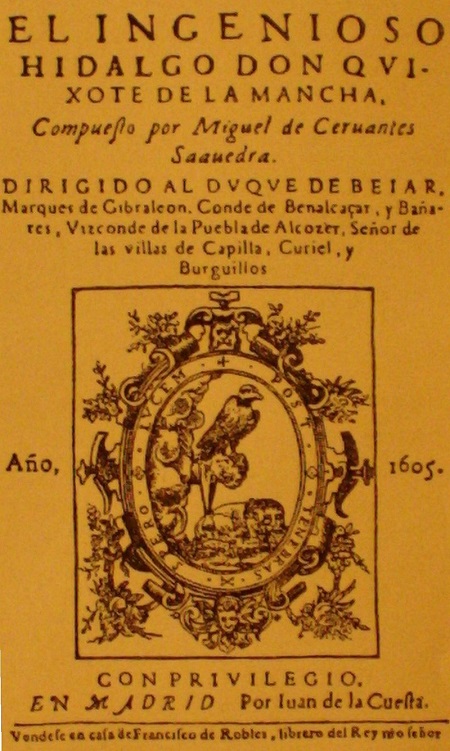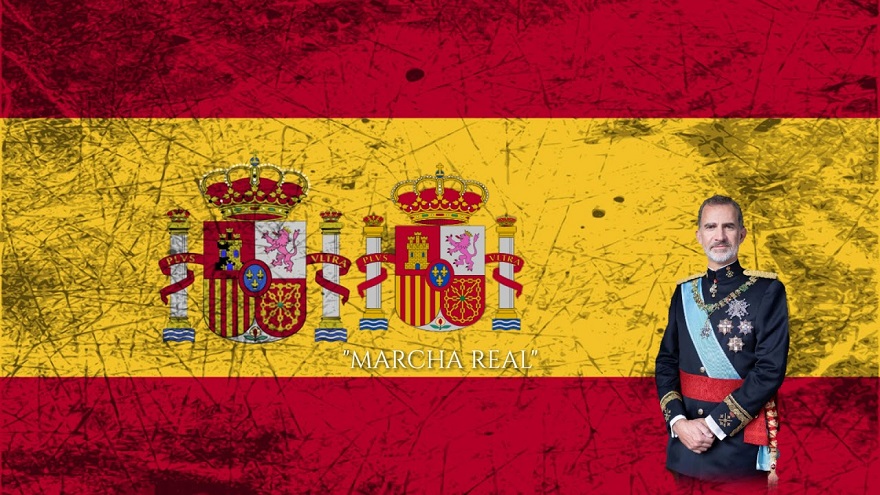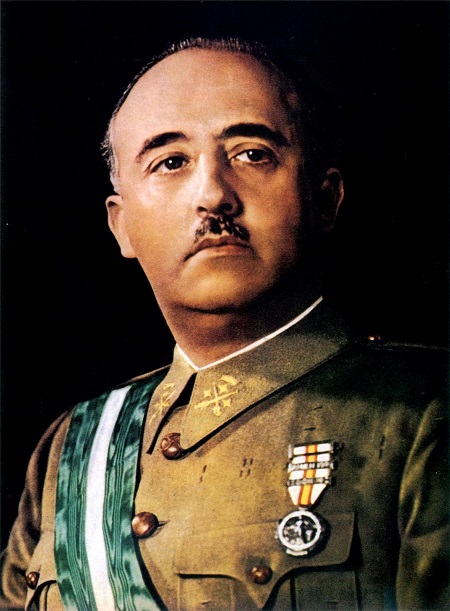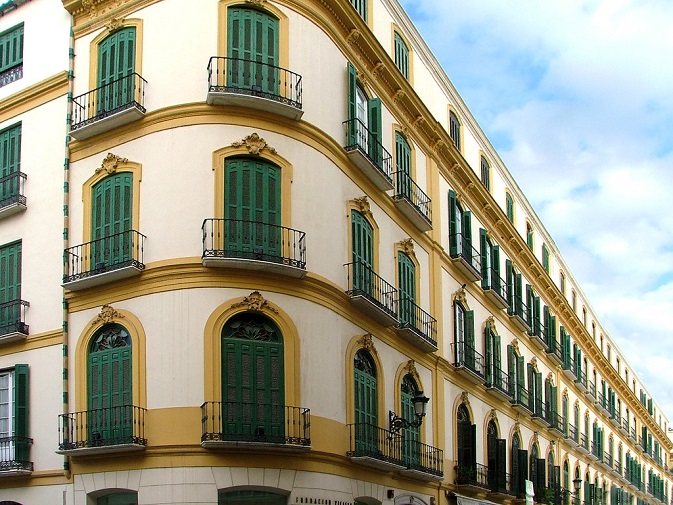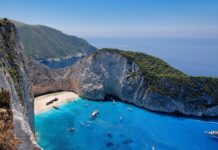Originally settled by ancient Phoenicians, Spain features old-world cities, Mediterranean beaches, and its own unique culture. It’s a sizable country comprising almost 506,000 square kilometers including the Canary Islands and its territories along the coast of North Africa. To help travelers learn more about Europe’s fourth largest nation, once the royal residence of King Ferdinand and Queen Isabella, here are 23 fun facts about Spain.
23 Fun Facts About Spain
1. An Assortment Of UNESCO World Heritage Sites
There are now 49 UNESCO World Heritage Sites here. The Alhambra, a massive fortress complex in Granada that was constructed in the 13th century by the Moorish rulers of Andalusi, is among the most well-known ones. Another well-known location with a view of the Tagus River is the Historic City of Toledo. It was a significant city in the Middle Ages and is famous for its medieval architecture, winding streets, and breathtaking views. Garajonay National Park, Santa Maria de Guadalupe’s Royal Monastery, the Camino de Santiago, and Barcelona’s Sagrada Familia are just a few additional places to visit.
2. Spain Hosts The World’s Largest Food Fight
On the final Wednesday of August each year, the town of Buol hosts the La Tomatina festival. It is an hour-long festival where people toss ripe tomatoes at one another. Every year, thousands of people travel from all over the world to attend this festival, which turns the streets of Buol into a sea of tomato juice and pulp. It may have begun as an unplanned food fight between friends in the middle of the 20th century, but its origin is unknown. Outlawed in the 1950s, but it has since gained popularity and received approval from the Buol town council.
3. Spanish Is The Second-Most Spoken Native Tongue
The second-most widely spoken native language in the world is Spanish, which is another fascinating fact about Spain. When the Roman Empire began colonizing the Iberian Peninsula in 218 B.C., its soldiers and settlers spoke a language called Vulgar Latin, from which Spanish eventually developed. Various regional dialects of Spanish have emerged over time, including Castilian, Andalusian, Catalan in Catalonia, Basque in the Basque Country, and Galician.
Spanish is the official language of Spain and is widely spoken throughout Latin America. It’s also referred to as Castilian. The Philippines and Equatorial Guinea both have Spanish as their official languages.
4. The First Modern Novel: Don Quixote
The book Don Quixote by Spanish author Miguel de Cervantes is considered to be the first modern novel ever written. First published in 1605, it’s a significant work of Western literature that influenced authors such as Mark Twain and Alexandre Dumas. The La Mancha region, where Don Quixote is from, is one of many locations throughout Spain where the novel is set. Bullfighting, flamenco music, bullfighting, and typical Spanish cuisine are some of the aspects of Spanish culture present. Don Quixote has had a profound influence on Spain’s culture and is a key part of the nation’s literary heritage.
5. Exceptional Olive Oil
Olive oil is a traditional ingredient and one of the planet’s healthiest oils thanks to its abundance of omega-3 fatty acids. Spain produces over 40 percent of the world’s olive oil. It’s the largest producer in the world. It’s valued for its high quality and is an ingredient of numerous traditional Spanish dishes like gazpacho, and tortilla espanola.
Olive oil is used in cosmetics and other goods too. Strict regulations are applied during production. The production and labeling of olive oil are governed by the Denomination of Origin system. This system guarantees that olive oil bearing a particular label is produced in a particular area and adheres to certain quality requirements.
6. The Birthplace Of Flamenco
An exceptional example of Spain’s artistic heritage is flamenco dance. Flamenco was first performed in private venues like family gatherings, cafes, and taverns in the late 1700s among poor and marginalized communities in Andalusia, particularly in Seville, Jerez de la Frontera, and Cádiz. Flamenco is a form of Spanish music that is accompanied by guitar, singing, and rhythmic clapping. It’s now practiced and studied all over the world. Flamenco was officially recognized as a component of the intangible cultural heritage of humanity by UNESCO in 2010.
7. Spain’s Home To The Earth’s Oldest Eatery
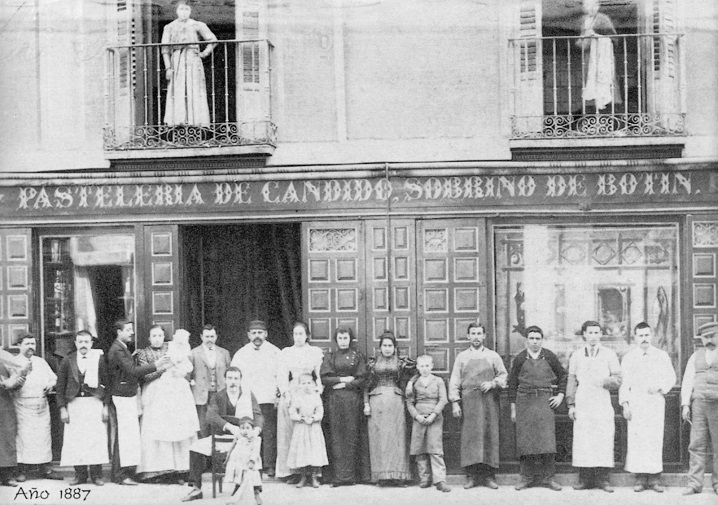
The oldest restaurant still in business is Sobrino de Botn, which is nestled in Madrid in a historic building in the center of Old Town. It was established in 1725 and is renowned for its authentic Spanish dishes, such as roast suckling pig and lamb, as well as seafood. The eatery has a lengthy and illustrious past, having hosted numerous notable individuals over the years, including writer Ernest Hemingway and artist Francisco de Goya. It has kept many of its original features, including a 17th-century oven that’s still used to cook its roast meats and its 1590-year-old cellar.
8. Spain Has The Highest Number Of Bars In The Entire European Union
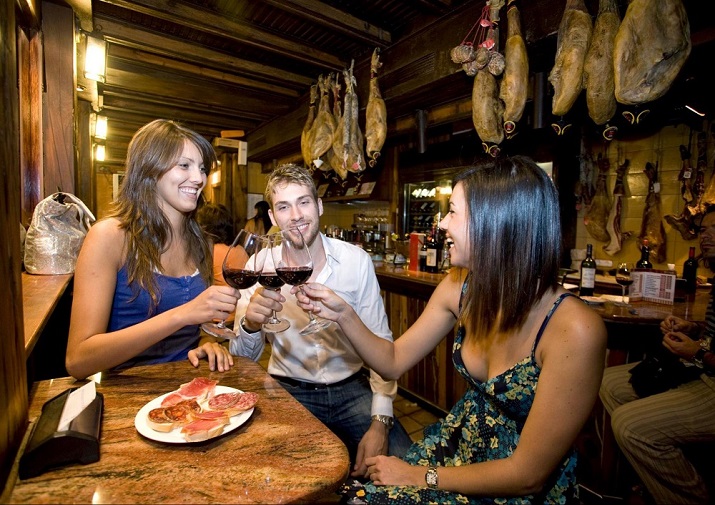
Spain has the most bars of any country in Europe, so it’s difficult to go without drinking there. It is a known fact that Spaniards enjoy drinking. (Hey, who doesn’t?)
Spain has a seemingly endless number of bars and pubs, from clubs to tapas bars, that are an integral part of its thriving social scene. Travelers will be able to find bars open both day and night in many of Spain’s major cities. Around 270,000 bars are thought to exist in Spain, which equates to about one bar for every 175 people.
9. The Spanish National Anthem Is An Instrumental
The Marcha Real, Spain’s national anthem, is distinctive in that it is an instrumental and lacks any official lyrics. Although it wasn’t formally acknowledged until 1997, the anthem has been in use since the 18th century and was made the official national anthem of Spain in 1931. One of only four nations whose national anthems lack official lyrics is Spain. The absence of lyrics in the national anthem has been criticized over the years, but it has also been viewed as a symbol of the country’s unity because it represents all of Spain without favoring any one region or language.
10. The Infamous Spanish Civil War
The Spanish Civil War, which lasted from 1936 to 1939, was fought between the Nationalists, a confederation of fascist groups led by General Francisco Franco, and the Spanish Republic, which was backed by left-leaning organizations. After the Nationalist side won the war in 1939, Franco remained in charge of the Spanish state until his passing in 1975. Significant political and social changes occurred in Spain as a result of the war, which had a profound effect on both Spain and the rest of the world. It is regarded as a pivotal moment in 20th-century history and a catalyst for World War II.
11. Spain Still Has A Royal Family
Spain is a monarchy. The current ruling monarchy in Spain is the Spanish Royal Family. King Felipe VI, who took the throne in June 2014 after his father, King Juan Carlos I, abdicated, is the reigning monarch at the moment. With a history that stretches back to the Middle Ages, the Spanish Royal Family has had a significant impact on the country’s history and culture. It has a long and illustrious history that is intricately entwined with the nation’s cultural and political identity, and it continues to be a widely admired and respected institution in Spain today.
12. Spain Has An Assortment Of Islands
Spain actually ranks among the nations in Europe with the most islands. There are more than 60 inhabited islands, and the total number of islands, including uninhabited ones, is thought to be more than 1,000. The Balearic Islands, which are comprised of Mallorca, Ibiza, Formenta, and Menorca, are situated in the Mediterranean Sea and are the most well-known Spanish islands.
Off the northwest coast of Africa, Spain also has the Canary Islands, which include Fuerteventura, Gran Canaria, Lanzarote, and Tenerife, among others. Other islands, including Alboran Island, the Chafarinas Islands, the Ebro Delta Islands, and the Columbretes Islands, are Spanish territory.
13. Spain’s Beaches Can Be Clothing Optional

Topless sunbathers are frequently spotted on beaches and in public pools, especially in tourist areas, as Spain is known for its lax attitude toward nudity. Numerous nudist clubs and resorts can be found all over the country, and clothing-optional beaches are also quite common. It’s crucial to be aware that in Spain, it is illegal to undress in public places like public streets and city squares. Always observe local laws and customs, only engage in nudity in private places and specifically designated areas, and be aware of cultural attitudes toward nudity.
14. Spain Is The Birthplace Of Picasso
Spain has quite a long history of producing great artists and serving as a hub for great art in Europe. However, Pablo Picasso, who was born in Malaga, Andalusia, in 1881, might be its most well-known artist. He is renowned for having revolutionized the art world, and the most prestigious museums in the world continue to collect and exhibit his work. When one of Picasso’s works sold for $179.4 million in 2015, it broke the previous auction record.
15. Spain Doesn’t Have The Tooth Fairy
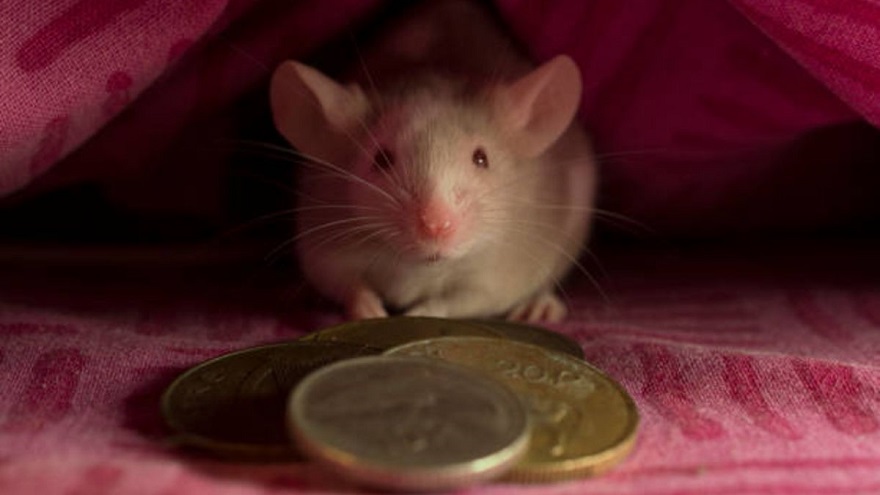
No Tooth Fairy here! In Spain, the Tooth Mouse, a.k.a. Ratoncito Perez, collects children’s missing teeth in Spain and leaves a coin or other token of appreciation in return. The local folk tale notes that he brings the teeth back to his mousehole to construct his castle.
The custom, which has since become a beloved aspect of Spanish culture, is thought to have started in Spain in the late 19th century. Parents occasionally stage elaborate Tooth Mouse visits with props and costumes to make the experience even more magical for their kids. Children frequently make special Tooth Mouse boxes or leave notes for the Tooth Mouse.
16. Spaniards Run With The Bulls
The widely publicized running of the bulls competitions and Spain’s highly controversial bullfighting tradition have made the bull a revered animal in that country, despite the fact that it is tortured in the ring. Today, animal rights activists are actively protesting it and calling for bullfighting and the like to be abolished. Nevertheless, Despite the injuries and occasional fatalities that result from the Pamplona running of the bulls, the event attracts up to 20,000 participants every year. Bull running and fighting is a Spanish tradition that dates back to the 14th century.
17. Most Citizens Are Roman Catholic
Roman Catholicism is the most commonly practiced religion among Spaniards. This wasn’t always the case, though. The majority of Spain was ruled by North African Muslims, a.k.a. Moors, for over five centuries up until 1492.
The country’s art, architecture, and very language have all been influenced by the Moors in a number of different ways. Spain has a long and rich history that has been shaped over the ages by a wide variety of religions and cultures. The history of Spain is a fascinating tapestry of various cultures, spanning the Romans, Visigoths, Moors, and beyond.
18. Spain Has A Big Lottery
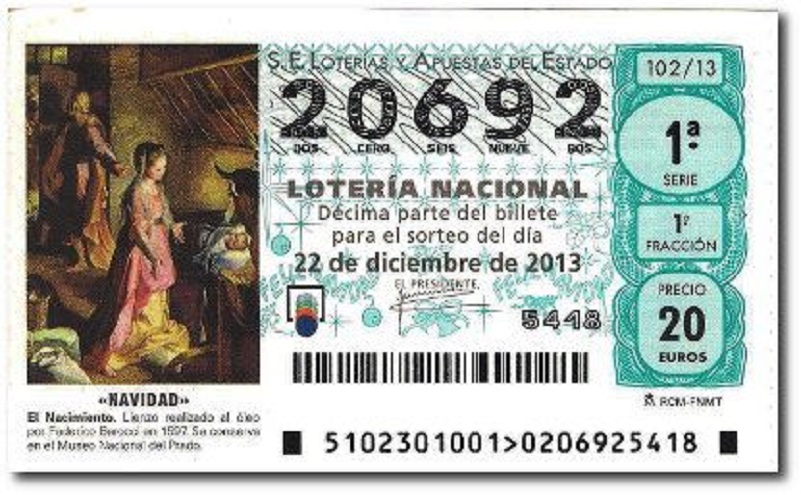
This fun fact about Spain is perfect for sharing with others around Christmas time. Indeed, the largest lottery in the world in terms of total prize money is the Spanish Christmas lottery, which is played every year on December 22. The payout was reported to be 2.5 billion dollars in 2022. There are many other smaller prizes available in addition to the top prize, also known as “El Gordo” (in English, the fat one), which is typically worth several million euros. More than 13,000 winning combinations have been found in the Spanish Christmas Lottery, meaning that a sizable number of ticket buyers actually win a prize.
19. The Tower Of Hercules Is Here
The Tower of Hercules is one of Spain’s most recognizable landmarks. Indeed, Spain is known for its rich history of engineering and architecture. The lighthouse is located in Coruna, a city in Galicia, and it was built in the second century AD. With a height of almost 57 meters, it is also the second-tallest lighthouse in Spain. The Tower of Hercules, which was constructed with the inventiveness and skill of the Roman engineers of the time, is still a source of pride for the Spanish people.
20. Getting Hitched In Spain
It’s true that Spaniards have a propensity to view marriage as a serious commitment, and as a result, many are hesitant to enter into a marriage. Spain, with the exception of Sweden, has the lowest marriage rate in the EU. Unfortunately, after their weddings, couples aren’t always inclined to stay together. Spain now has a divorce rate of about 57 percent, which is higher than the U.S., where the rate has dropped to 44 percent. It’s important to keep in mind that divorce has many different causes and is frequently complicated, making it challenging to come to any firm conclusions about why divorce rates in Spain are higher than those in other nations.
21. Spaniards Live Longer
The Mediterranean diet, which is high in fruits, vegetables, whole grains, legumes, nuts, and olive oil, is the foundation of Spain’s balanced, healthy diet. Numerous health advantages of this diet have been linked to it, including a decreased risk of heart disease, stroke, and type 2 diabetes. According to the Bloomberg Healthiest Country Index, Spain is the world’s healthiest nation. The Mediterranean diet is renowned for its mouthwatering and varied flavors in addition to its many health advantages. Spain has one of the highest life expectancy rates in the world, at 82 years. According to predictions, Spain’s citizenry will be the oldest in the world by 2050.
22. Spain’s Big Beach Culture
More than 8,000 beaches can be found along Spain’s more than 4,828 kilometers of coastline. The beaches of Spain are renowned for their beauty and welcoming environment for visitors. Bogatell in Barcelona, Platja de Ses Illetes on Formentera, Ses Salines in Iberia, and East Side Beaches in Marbella are a few of Spain’s most well-known beaches. These beaches are just a few of the stunning shorelines Spain has to offer. Tourists from all over the world frequent Spain’s beaches, which provide a variety of activities like swimming, tanning, surfing, and more. There are options for everyone with so many from which to choose!
23. Spain’s Energy Source Blows
Spain is a great place to produce solar energy because of how much sun it gets. However, the nation has concentrated on wind energy and has risen to become the fifth-largest wind energy producer in the world, after China, the United States, Germany, and India. Spain is a fascinating place to visit because of its rich culture and history, which was influenced by civilizations like the Romans, the Moors, and the Visigoths. Essentially, Spain offers something for everyone, from the sun-kissed beaches of the Mediterranean to the snow-capped peaks of the Pyrenees. Spain is a distinctive and fascinating nation with a lot to offer tourists and history and culture buffs.





